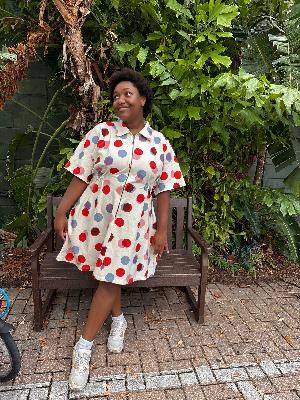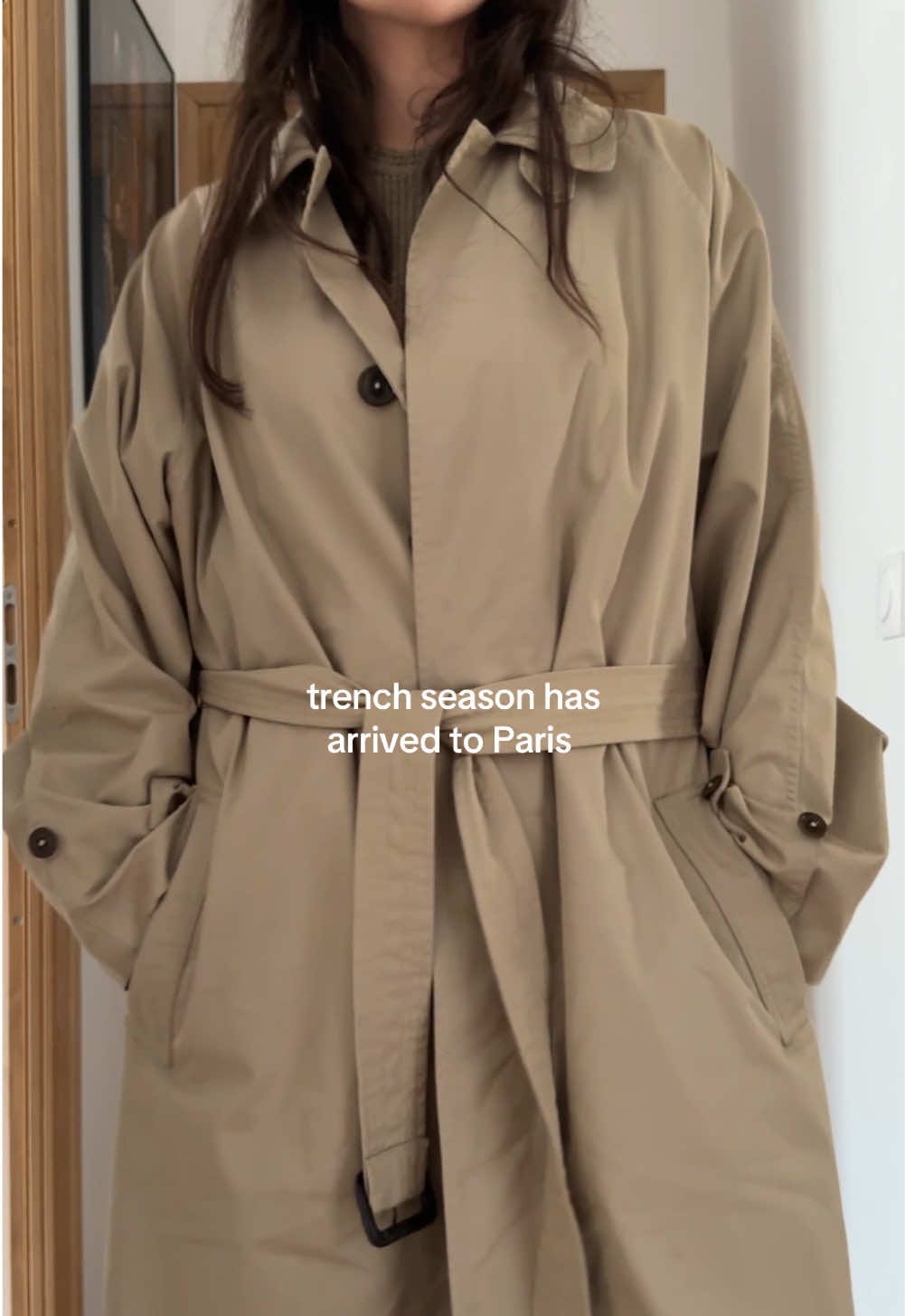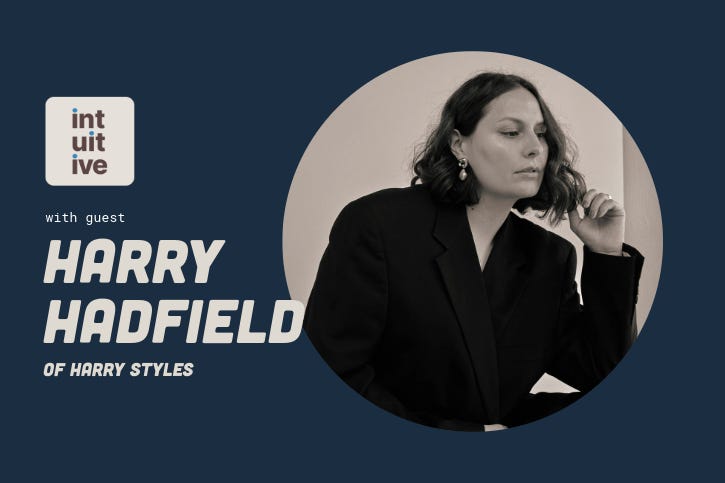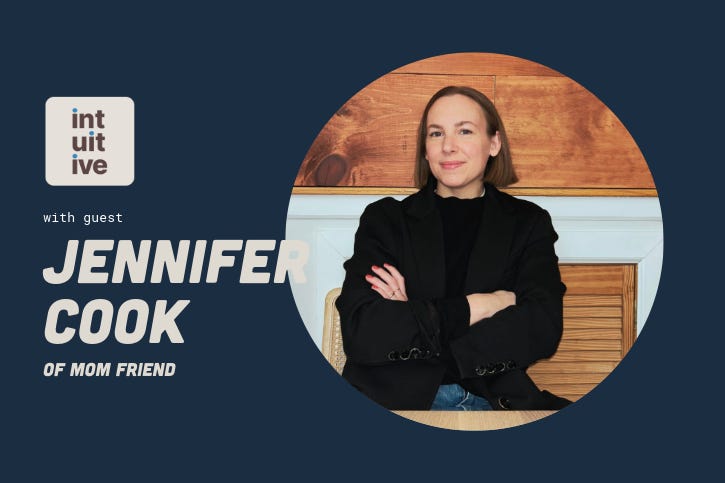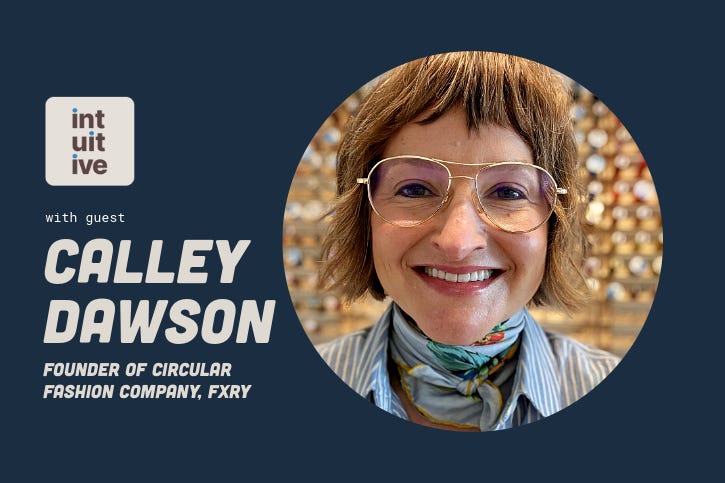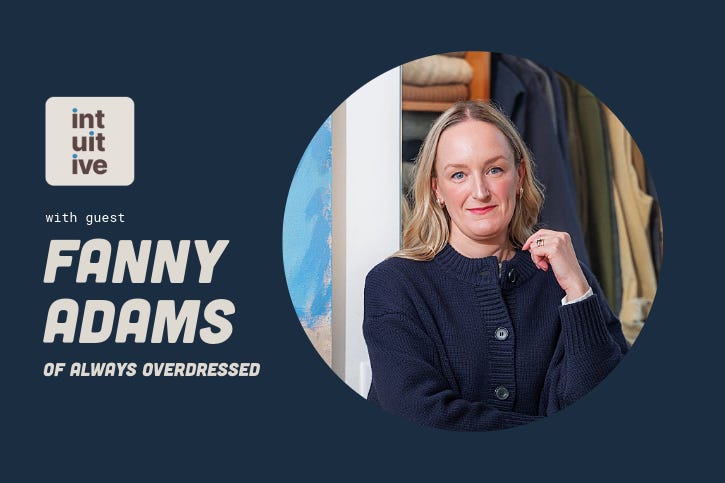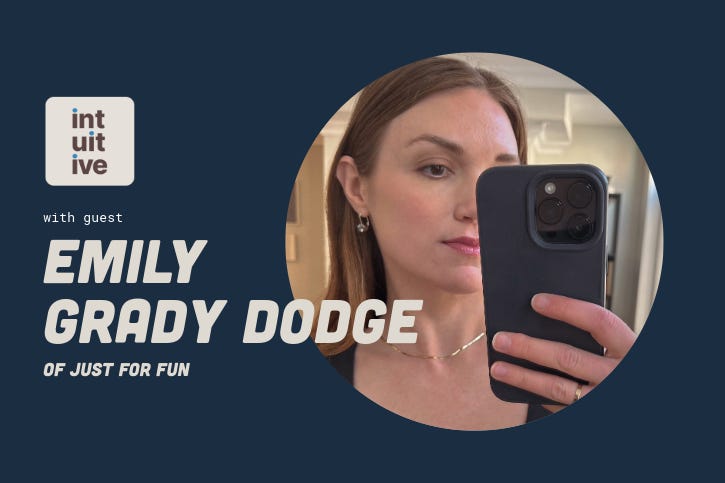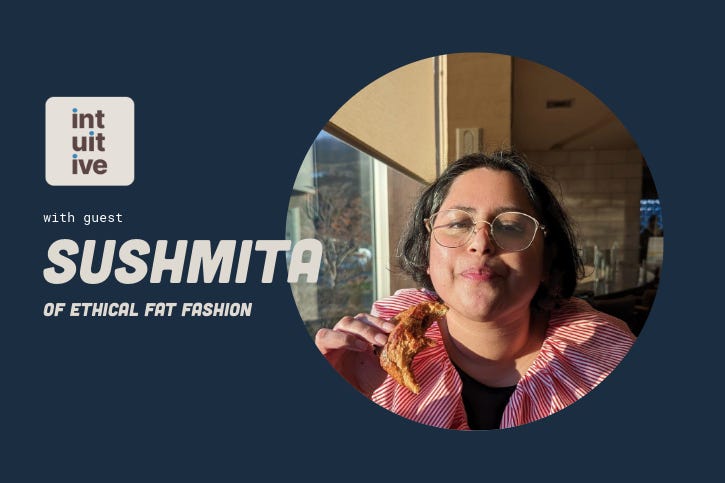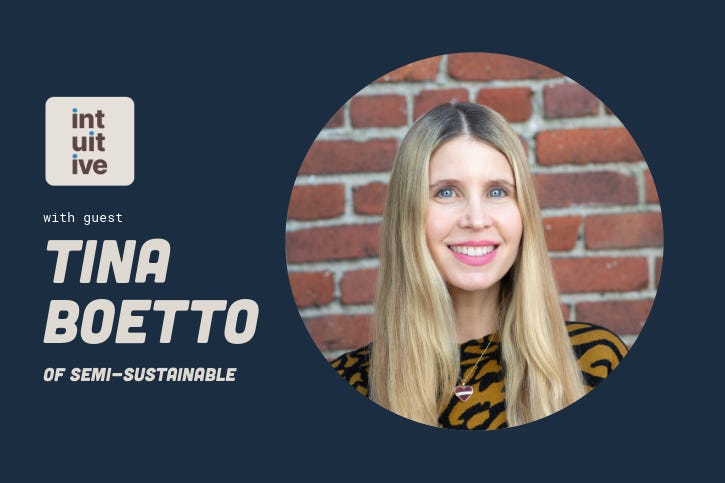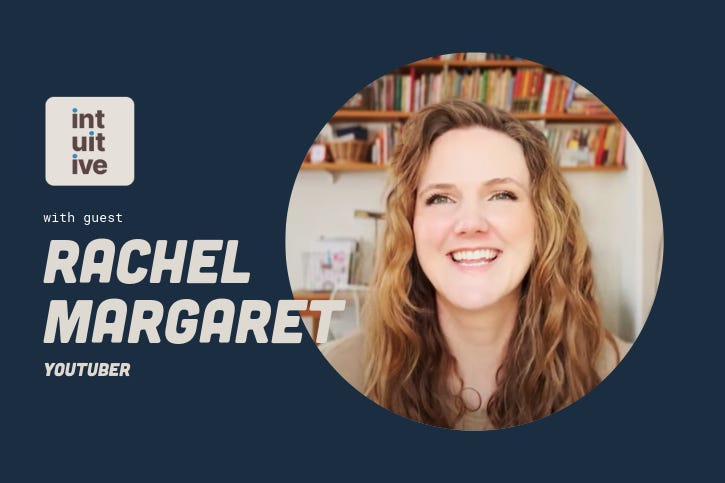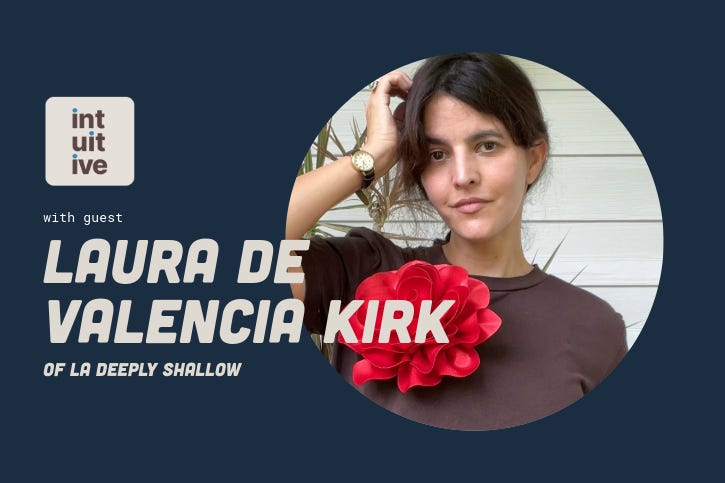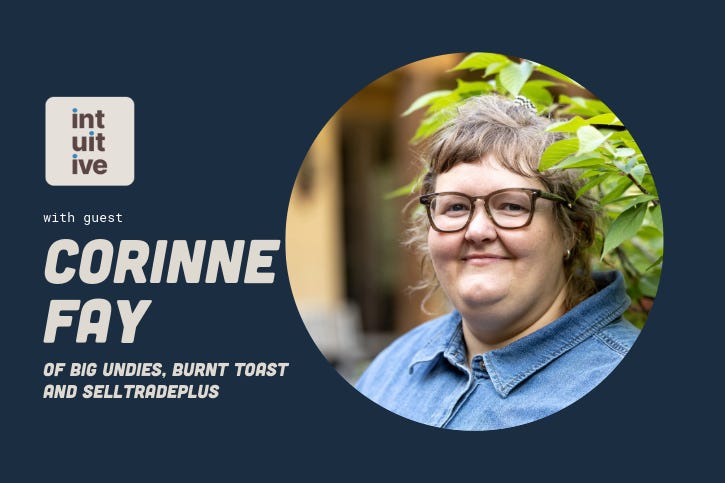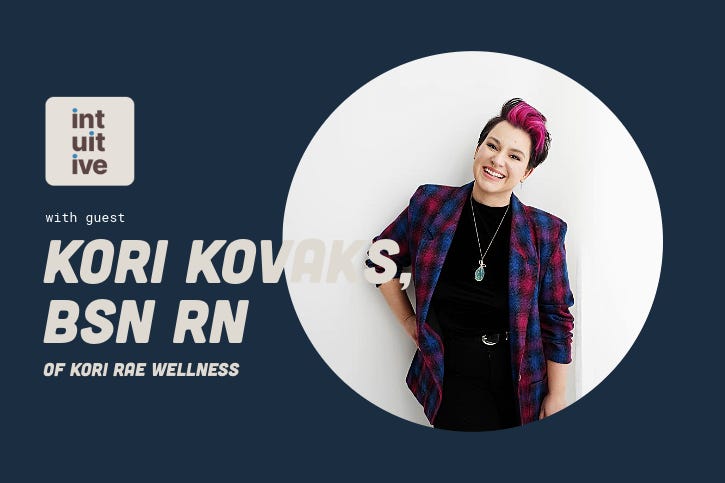Episode 13. Coolhunting for conversation-starters, with Talía Cu
Description
This week’s guest is Talía Cu, writer of Latin Zine by Talía Cu and veteran fashion journalist. She’s focused on introducing the world to cool designers and pieces with soul, sourced from the diverse cultures within Latin America. In our episode, we cover everything from her perspective on Latin American fashion’s influence on the global style scene, to how she personally decides what to buy and wear. Enjoy!
Episode Transcript
This transcript has been edited for clarity.
You're listening to Intuitive Style, where we believe that everyone has style. In conversation with fantastic guests, we explore how to tap into our style intuition so that we can dress authentically and live fully. Today's guest is Talía Cu, writer of Latin Zine. Talia is a Mexican fashion journalist who has worked for esteemed publications including Vogue Mexico and Latin America. As a fashion illustrator for luxury brands like Fendi and Bumble, she is currently a cool hunter of Latin American brands. Her Substack newsletter showcases her exquisite eye for emerging talent, hidden gems, and one-of-a-kind artisanal fashion. Talia, welcome to the show.
Talía: Thank you, I'm really excited because it's my first podcast interview in English.
Maureen: I'm sure it's going to be fantastic. Thank you for trusting me with this process. I'm excited to talk with you and learn more about you, your experience, and your personal style. For anyone who hasn't interacted with Latin Zine yet, would you share a bit more about your column?
Talía: Of course.
is a newsletter dedicated to understanding fashion from a Latin American perspective. It's a place to discover new fashion stories and hidden gems—brands you don't typically see in mainstream media.
Maureen: I love that your work introduces us to new brands. Many people are interested in connecting to style on a personal level. Could you speak more to the global impact of Latin American brands? How is Latin American fashion shaping global style trends?
Talía: I wrote about this in the beginning of my newsletter. I don’t like to generalize Latin America because each country is so different. Designers often have to compensate for things like lack of materials, so they create amazing work with what's available. The whole region has a wonderful creative spirit. Globally, there's growing appreciation for artisanal pieces and sustainable practices, and Latin America is at the forefront of that.
Maureen: I was hoping to talk more about sustainability. You write about fashion discovery, which can lead to shopping. But how do we appreciate and engage with fashion without overconsuming?
Talía: That’s a big reason I created the newsletter. I found so many beautiful things and wanted to collect them somewhere. I do write about shopping, but I also share designers’ stories so there's more context to what you’re purchasing. I like to buy directly from designers or brands I've followed for a while and believe in their methods or practices. I usually don’t buy on impulse. I think carefully and sometimes wait for the right piece that resonates with me. I’m also building a small archive of Latin American designers—pieces I may not wear daily but that are meaningful or significant.
Maureen: Even though your column isn’t personal style, or would you describe it that way?
Talía: Not exactly, but I do look at Latin American fashion from my own point of view. It’s about the people I meet, the things that catch my eye, and what I discover. I've been covering Latin American fashion for years, but I’m always finding new designers and stories, and I share them as I go.
Maureen: I love the way you balance discovery and perspective without it becoming strictly personal style. There's a clear intentionality and playfulness to your work. Let’s talk a bit about your own personal style. I'm interested in why people wear what they wear—how do you decide what to buy and wear, especially since you’re constantly seeing cool brands?
Talía: Everything for me is intuitive. When I go into a shop, something needs to grab my attention—maybe it’s a color or pattern. I also care about the stories behind the pieces. Like, if I know a brand has an interesting upcycling process, I want something from them. One of my favorite things is when someone compliments a piece and I get to tell them it’s from a Costa Rican designer who upcycles leather. Fashion becomes a conversation.
Maureen: That’s beautiful. Your clothing becomes a part of your story and a way to engage with others.
Talía: Yes, I love talking about it.
Maureen: Okay, this is something I struggle with. There's a brand called Wray NYC that’s size-inclusive and editorial, and they’re going out of business. My first instinct was to buy everything. How do you handle moments like that—when you want to support a brand but also make sure what you buy is actually useful or wearable?
Talía: I’d say I have two categories: pieces I wear daily and curated archive pieces I only wear on special occasions. For daily wear, I buy things like printed mesh tops from Colombian brands that I wear often. I try to balance both—special pieces and practical items.
Maureen: That’s a cool way to approach shopping. I always feel like something has to be utilitarian for me to want to buy it. But fashion can also be conceptual or artistic.
Talía: Exactly.
Maureen: Let’s talk about how body awareness influences the way you dress. Are there certain textures, fits, or styles you gravitate toward based on how they make you feel?
Talía: Yes, especially as a woman with a larger chest, I notice many Latin American designers don’t make tops that fit me well. The models they show often have smaller chests, and I wonder how the clothes would actually look on me. That’s why I don’t love shopping online—I need to try things on. I also have PCOS, and for a while, my weight was fluctuating, which made me more self-aware. During that time, I started wearing more pastels. I think it made me feel soft and loving toward myself.
I also have PCOS, and for a while, my weight was fluctuating, which made me more self-aware. During that time, I started wearing more pastels. I think it made me feel soft and loving toward myself.
Maureen: That’s really beautiful. I've gone through body changes too, and it’s true—our relationship with clothing can shift with our relationship to our bodies. Some silhouettes I used to love just don’t work for me anymore, and that’s okay.
Talía: Yes, I'm 35, and I’ve been thinking about how many independent designers seem to focus more on people in their twenties. I love what they create, but sometimes I see things like mini skirts and wonder—can I still wear that? Even if it’s not super short, I still question if I’ve passed the age for it, or if I’m just overthinking. I don’t feel as comfortable in those pieces as I did in my twenties, and I’m still processing what that means for me.
Maureen: Can I ask—have you tried one on?
Talía: Yes.
Maureen: How did you feel?
Talía: I felt a bit uncomfortable. I kept wondering if I was showing too much leg.
Maureen: I totally get that. I’m all about self-compassion, so if that’s how you feel, that’s okay. You don’t need to rush into anything. I’ve been thinking about this too. I’m almost 30, so I feel like I could still get away with a mini skirt, but I’m married and live in the suburbs, and the idea just doesn’t appeal to me. I’d rather wear shorts—they’re more comfortable, and I don’t have to worry about anything riding up or flashing someone. But I think if wearing one feels authentic to you, go for it. And if it doesn’t, that’s okay too.
Talía: Exactly. That’s true.
Maureen: That’s where I’m at with it.
Talía: I’d love to wear tights underneath, but it’s so warm where I live, so that’s not really an option. Maybe wearing shorts underneath would make me feel more comfortable. I hadn’t thought of that.
Maureen: Yeah, I think a little bike short could help.
Talía: Yeah, maybe.
Maureen: Let’s go back to your style evolution. Have you had any memorable phases?
Talía: When I was 19, I was obsessed with collecting earrings. There was a shop in my hometown that sold beads from around the world, and I was constantly buying jewelry. Then I went through a phase of buying weird tights online from UK brands—like ones with tattoo prints. In my early 20s, I wore a lot of pink and fuchsia, but a boy I liked told me it looked childish, so I switched to wearing black. I’m sad I let that influence me. Now, I’m really into rings, brooches, and necklaces. My hair also affects my style—since changing it recently, some things don’t look the same on me.
Maureen: Yeah, for people listening, how would you describe your current hairstyle? It’s very cool.
Talía: It's like half blonde and half copper.
Maureen: And what was your m

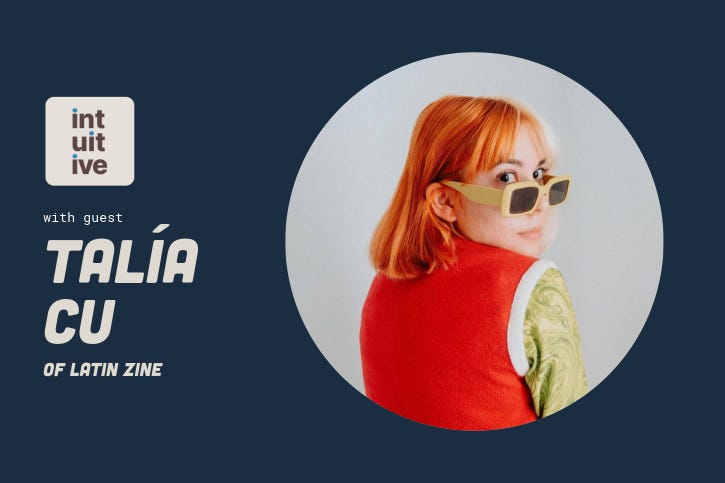
![Episode 24. Rambling in [Intuitive] Style, with Traci Landy Episode 24. Rambling in [Intuitive] Style, with Traci Landy](https://substackcdn.com/feed/podcast/2669400/post/177614968/9bbc5a3f73fab5e46b0a064fb5bff6b4.jpg)
